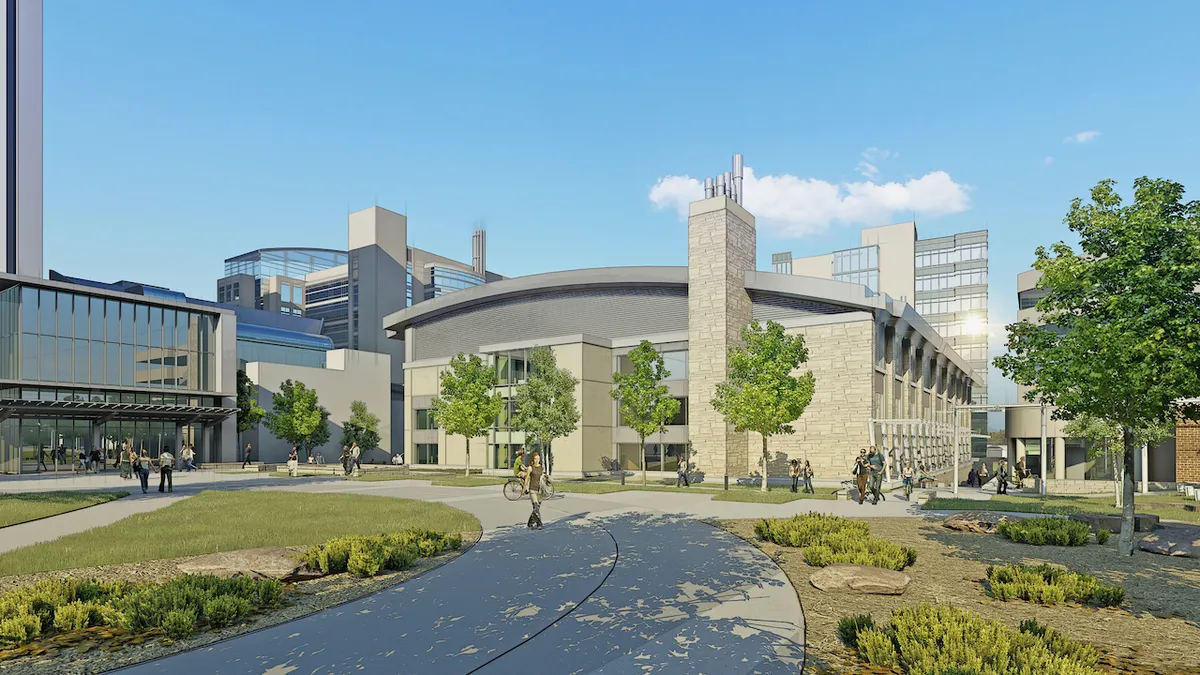The Centers for Disease Control and Prevention has been planning a new high-containment laboratory facility near its headquarters in Atlanta for years, well before the coronavirus made its debut in the U.S. and around the world. McCarthy Building Cos. has been awarded a $233 million contract to serve as Construction Manager as constructor (CMc) on the project.
A CMc contract, according to the American Institute of Architects, typically sees the owner engage with one entity to perform the functions of both construction manager and contractor.
The CDC also has chosen Flad Architects, Page Southerland Page and WSP to plan, program, and design the new facility.
The CDC asked Congress for $400 million to build the lab and perform associated work in 2018, the Associated Press reported. The new lab, classified as BSL-4 (biosafety level 4), will replace one designed by HDR and built by McCarthy in 2005. That facility is located on the agency's main campus in Atlanta.
Despite the anticipated 50-year life of the existing lab, the CDC told lawmakers that the building will be obsolete before then and that it would have to shut down the lab for years in order to perform the necessary renovations.
BSL-4 labs are designed for research on the most dangerous health threats, and McCarthy has built more than 50% of the gross square feet of these facilities in the U.S. This one, however, will be the most advanced, according to the general contractor.
The new 160,000-foot, multistory High Containment Continuity Laboratory (HCCL) will be located on the CDC's Roybal Campus and will have space for approximately 80 researchers. The facility will include:
- High-efficiency particulate air (HEPA) filtered supply and exhaust air.
- Air pressure resistant doors.
- Pressure cascade zoning.
- Effluent collection and treatment.
- Pressure decay tested coatings and penetrations.
- High purity breathing air.
- Chemical decontamination showers for research staff.
- Connections to the existing Roybal campus utility systems with below-grade utility tunnels and a two-level bridge connection.
When the project is complete, it will be one of only three facilities in the world able to perform "diagnostic research on specific, select viruses."
Because of the expertise needed to build BSL-4 facilities, said Ryan Molen, vice president and business unit leader at McCarthy, there is a tight circle of contractors that compete for these projects.
"The barriers to entry into this space for new contractors are high," Molen said. "[However,] the field of qualified contractors widens when looking at the more broad context of public health facilities that can vary in the range of complexity."
The COVID-19 pandemic, he said, is driving interest in public health work, so it could be that contractors with varying degrees of experience will be able to land more projects in the space, if additional funding is made available.
Still, Molen said, public heath construction usually has to compete with other needs like infrastructure when it comes to the allocation of tax dollars.
The project, he said, will take 36 months, and will local construction companies, small and large, could get a boost from the project.
"In keeping with McCarthy’s strong commitment to economic inclusion, " he said, "there will be opportunities for both general and specialty subcontractors on this project.”













